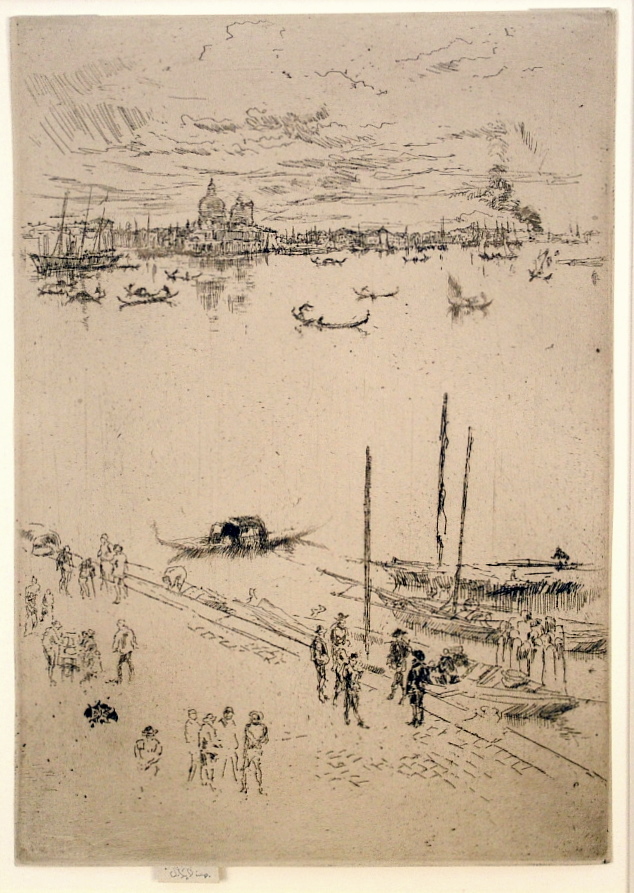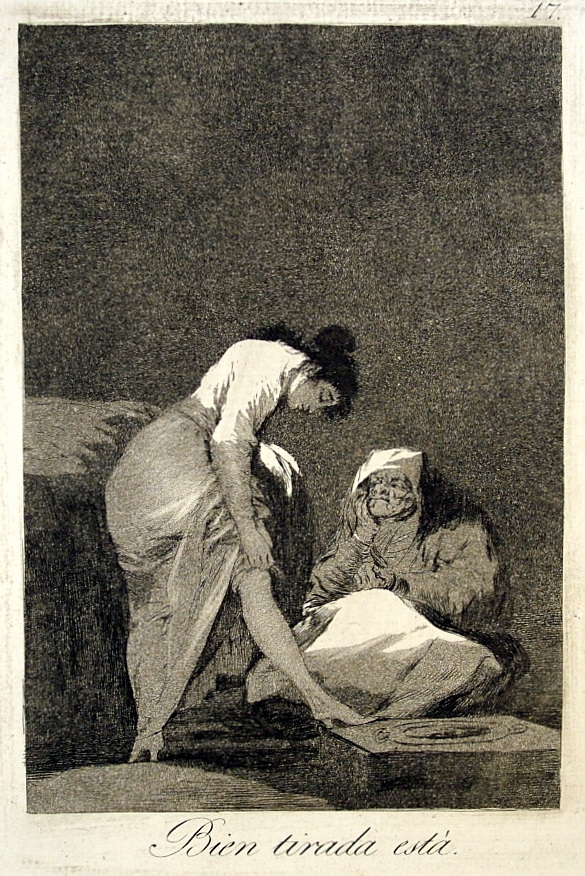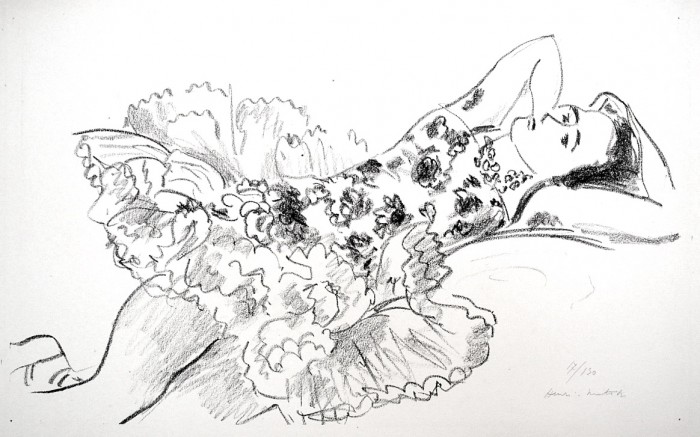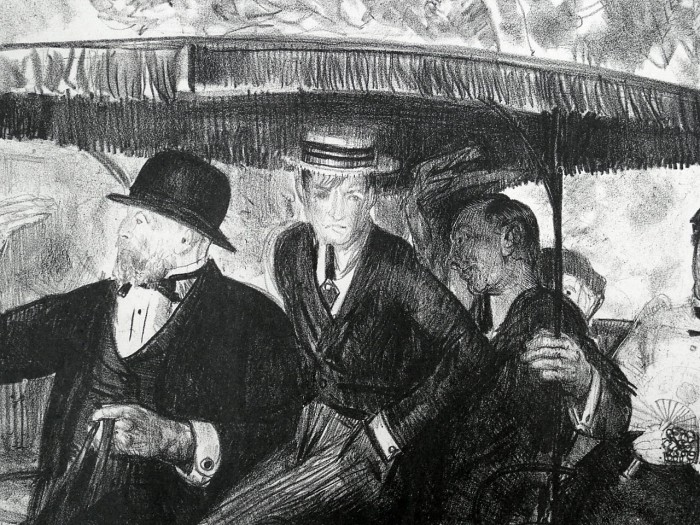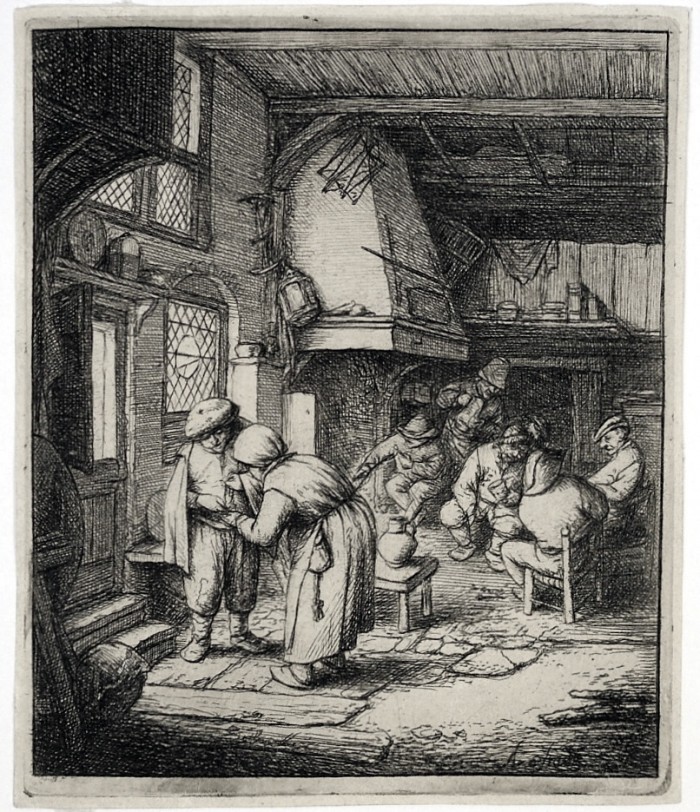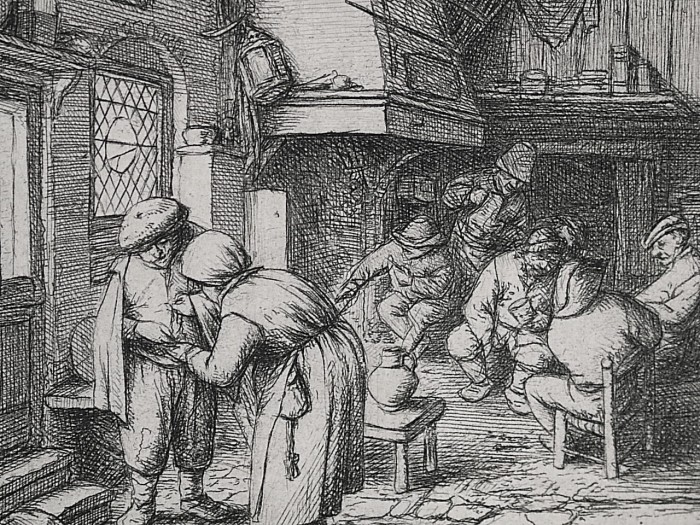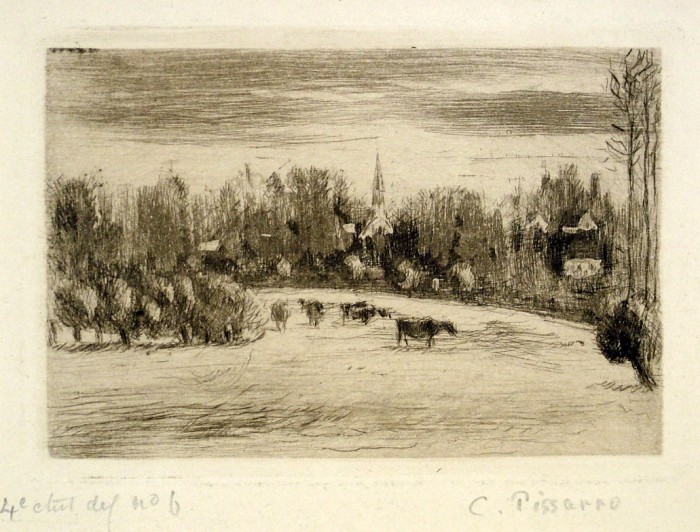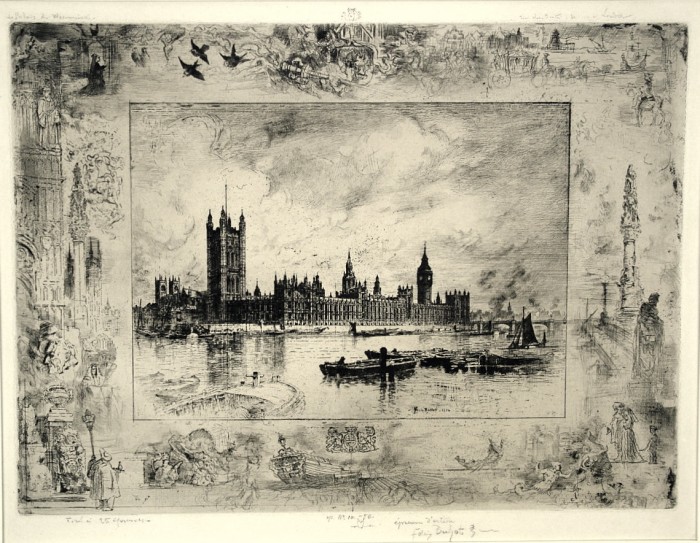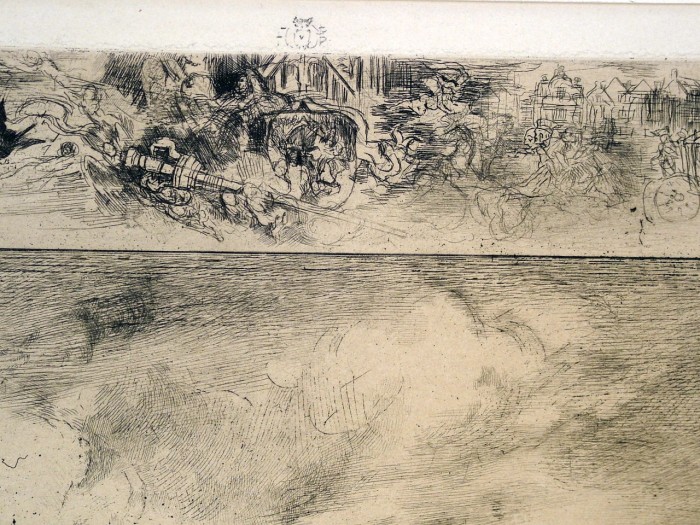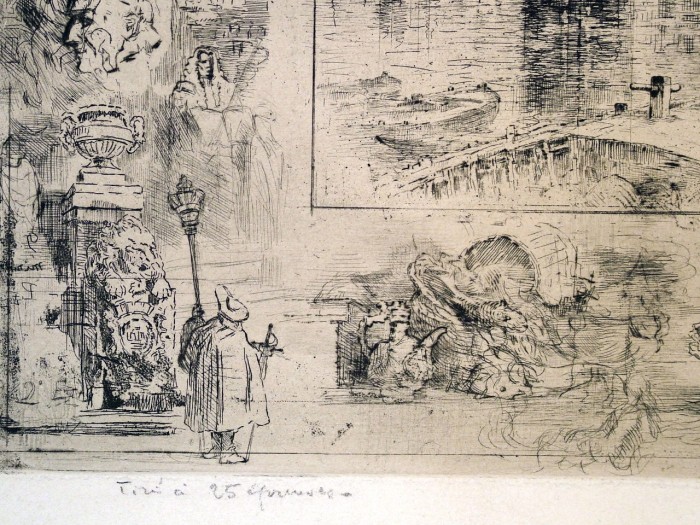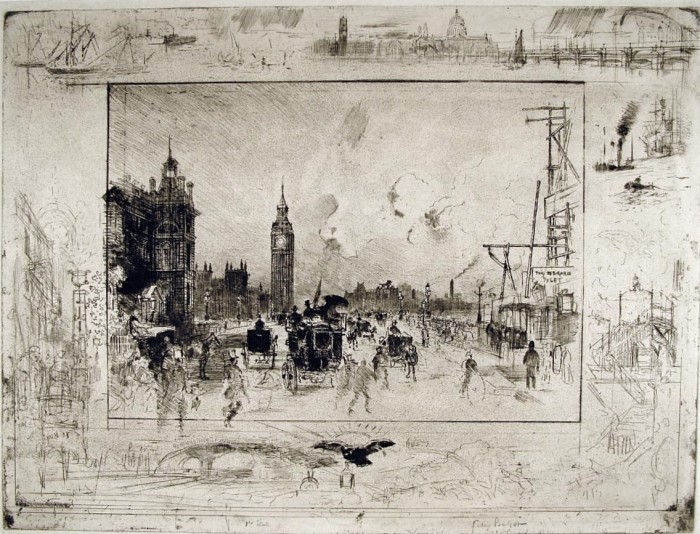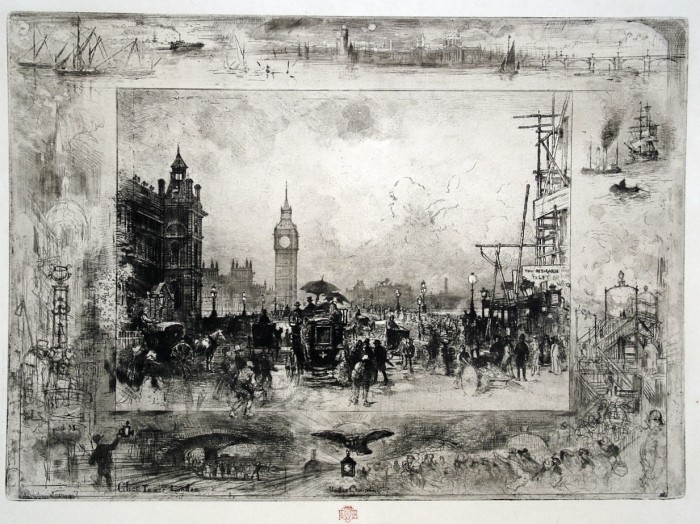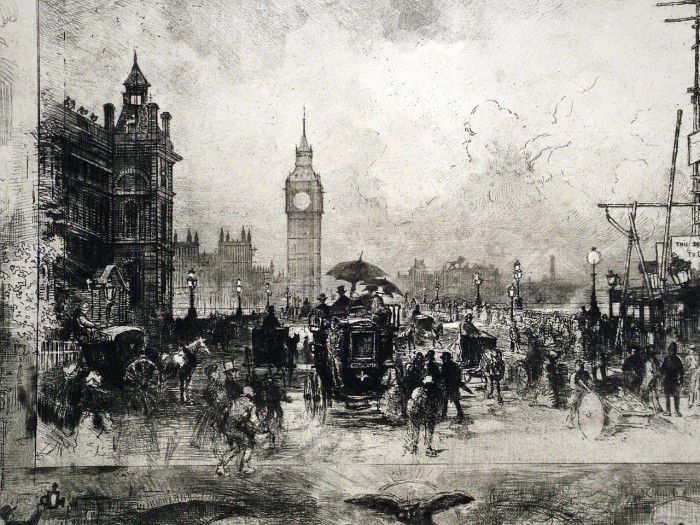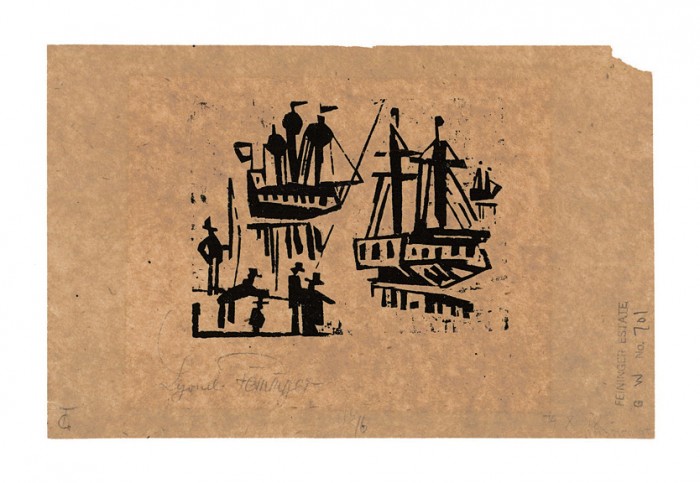Upright Venice
Tuesday, July 27th, 2010James Abbott McNeill Whistler (1834-1903), Upright Venice, 1880, etching, signed with the butterfly on the tab, and inscribed “imp” [also signed with the butterfly in the plate]. Kennedy 205, second state (of 4); one of the Second Venice Set. In flawless condition, trimmed just outside of the platemark by the artist, with the tab for the butterfly, 10 x 7 inches.
A very fine impression, printed in brown ink on lightweight laid paper, printed by the artist and wiped with plate tone overall, and a very subtle layering of additional tone on the wharf in the foreground.
After 42 impressions were printed the plate was cancelled and turned over to the Dowdeswells on January 17 1887; the plate is now in the Art Institute of Chicago.
The first state of Upright Venice included only the top part of the composition; the bottom part was added about 6 months later in the second state. The third and fourth state changes were minor, just additions to the shadows of the gondola at the bottom. Although the composition works splendidly from an aesthetic perspective, it actually depicts two very different views of Venice: at the top the view of the city at a distance with sky above and water below, and at the bottom a closer view of waterfront activity.
